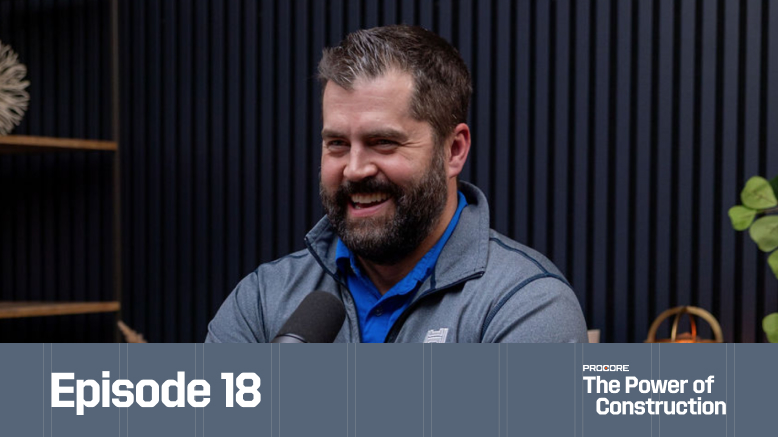The Personal Journey Behind "The Paperless Builders"
Hamzah Shanbari's path to writing "The Paperless Builders" began with a simple desire: getting home to his family by 5 PM instead of staying in the office until 9 PM coordinating construction drawings. Starting as a PhD graduate in Haskell's VDC BIM department, Shanbari initially sought technology solutions for personal productivity.
This "selfish" motivation evolved into helping his entire team, then Haskell as a company, and ultimately the entire construction industry through his book and work with Dysruptek, Haskell's innovation arm.
Why Construction Needs to Reimagine Its Future
The construction industry faces unprecedented challenges: 45% of projects experience delays and cost overruns over 20%, 35% of time is spent on suboptimal tasks, and 41% of the existing workforce will retire by 2031. Shanbari argues that the industry's growth to $22 trillion by 2040 demands a fundamental shift in how work gets done.
Technology, particularly AI, offers solutions to help contractors focus on value-driving activities rather than "dull, dirty, or dangerous" tasks that traditionally consumed significant time and energy.
The Paper-Based Problem: Information as the Biggest Bottleneck
Much of construction's inefficiency stems from "paper-based and paper-like processes"—including emails, manual approvals, and information hunting that wastes enormous amounts of time on job sites. Workers spend significant portions of their day looking for information, confirming that information is correct, or waiting for signatures on permits and approvals.
AI and digital transformation can eliminate these bureaucratic bottlenecks, providing instant access to accurate information when and where it's needed.
Changing Construction's Image Through Technology
Construction struggles to attract young talent partly due to outdated perceptions of the industry. Shanbari emphasizes that modern construction involves AR, VR, laser scanning, AI, and robotics—technologies that create exciting career opportunities beyond traditional manual labor.
"This isn't your grandfather's construction industry with the hammers and the tools and those archaic ways," he explains. Soon, job descriptions will include "craft level robotic operator" positions, fundamentally changing how the next generation views construction careers.
AI's Revolutionary Impact on Design and Construction
Shanbari predicts that AI will solve most problems in the design phase, creating drawings and models that contain complete, accurate information including assembly instructions, material sourcing, and tracking details. This addresses a root cause of construction inefficiencies: incomplete, inaccurate, or vague designs that create problems downstream.
AI-powered generative design tools can create multiple options quickly, giving designers unprecedented choice in solutions while automating routine tasks like dimension placement and conduit routing.
The Simulation Layer: A New Phase Between Design and Construction
Shanbari envisions a new market emerging between design and construction—a simulation phase that validates everything before construction begins. This simulation would verify that materials can be sourced locally for sustainability, confirm cost and schedule accuracy, and ensure constructability.
Nothing would proceed to the job site without passing through this simulation layer, fundamentally changing how projects move from concept to completion and reducing the problems that typically emerge during construction.
Haskell's Innovation Through Internal Ideas
Haskell's annual "Big Pitch" competition, running since 2020, demonstrates how employee-generated ideas can drive innovation. Recent successes include automated export of process equipment specifications from Plant 3D designs and a partnership with Via Technic to capture lessons learned from past projects.
These solutions address real pain points identified by workers closest to the problems, embodying the Toyota principle that those doing the work are best positioned to eliminate inefficiencies.
The BUILDERS Framework for Technology Adoption
Shanbari's BUILDERS framework provides a systematic approach to evaluating and implementing construction technology: Benchmarking current processes, identifying Users and their needs, creating detailed Implementation plans, ensuring proper Learning and training, identifying project Drivers who champion the technology, continuous Evaluation of progress, comprehensive Reporting of results, and optional Scaling for successful pilots.
This framework addresses the common failure pattern where technology pilots succeed but never scale across organizations.
The Rick Grimes Approach to Vendor Evaluation
Drawing inspiration from The Walking Dead, Shanbari developed three essential questions for evaluating technology vendors: What specific problem are you solving (in one sentence, not paragraphs)? Who are your biggest competitors (testing their market knowledge)? What differentiates you from competitors (focusing on customer success capabilities, not just features)?
After evaluating over 1,000 construction technology startups, these questions quickly reveal whether vendors understand their market, their competition, and their true value proposition.
Knowledge Transfer and Capturing Institutional Wisdom
With an aging workforce retiring, construction faces a knowledge transfer crisis. Haskell addresses this through tools that capture lessons learned from past projects and surface them to teams working on similar future projects. Rather than making people hunt for information, AI can proactively deliver relevant historical insights based on project type, location, and scope.
This approach preserves institutional knowledge while making it accessible to less experienced team members.
From Childhood Fascination to Career Purpose
Shanbari's construction career began with childhood fascination, watching builders problem-solve daily challenges from his bedroom window. Observing workers navigate unexpected rock conditions and constantly reference drawings to solve problems sparked his interest in the industry's problem-solving nature.
This early exposure shaped his understanding that construction is fundamentally about creative problem-solving—a perspective that influences his approach to technology adoption and innovation.
Education Innovation: Learning Through Gaming
Shanbari's PhD research involved creating video games that taught construction management skills through real-time simulation. Players managed timelines, resources, materials, and equipment under time pressure, learning to balance costs and scheduling without the luxury of stopping time.
Interestingly, non-construction students learned more effectively than construction management students, suggesting that fresh perspectives can accelerate learning when not constrained by existing assumptions about "how things should be done."
Planting Trees for Future Generations
Shanbari concludes with a Greek proverb: "A society grows great when old men plant trees whose shade they shall never sit in." This philosophy drives his work in construction technology—investing time and energy to collect data, decisions, and knowledge that will benefit future generations of builders.
While current professionals may see some benefits, the real impact will be felt by those who enter the industry 10-15 years from now, inheriting decades of accumulated wisdom and technological advancement.
Rapid-Fire Q&A with Hamzah Shanbari
Book Recommendation: The Culture Code by Daniel Coyle
Sources for Different Perspectives: Conferences—meeting people and learning from diverse experiences
Advice to Younger Self: "Keep going. Just keep going because it's gonna be alright"
Innovation Shaping Construction's Future: AI, specifically generative design and design visualization
Industry Tagline: "Ideas to reality" (or "Dreams to reality")—taking concepts and making them tangible
Key Takeaways
This episode reveals how AI will redefine rather than replace construction professionals:
Personal Motivation Drives Industry Change: Shanbari's quest to get home by 5 PM evolved into transforming an entire industry's approach to technology.
Paper-Based Processes Are the Enemy: Information bottlenecks—not just physical paper—waste enormous time through emails, manual approvals, and hunting for accurate data.
The Simulation Layer Revolution: A new market will emerge between design and construction, validating everything before it reaches the job site.
AI Solves Design Problems Upstream: Complete, accurate information in the design phase eliminates downstream construction inefficiencies.
BUILDERS Framework Enables Scaling: Systematic technology adoption prevents the common pattern where pilots succeed but never scale across organizations.
Three Questions Reveal Vendor Truth: What problem do you solve? Who are your competitors? What differentiates you? These questions quickly separate substance from marketing.
Knowledge Transfer Through AI: Capturing institutional wisdom and proactively delivering it to teams preserves expertise as experienced workers retire.
Construction as Problem-Solving: The industry's fundamental appeal is creative problem-solving, not manual labor—a message that attracts next-generation talent.
Gaming Teaches Better Than Tradition: Non-construction students sometimes learn faster because they aren't constrained by assumptions about "how things should be done."
Planting Trees for Tomorrow: Current technology investments create accumulated wisdom that benefits builders entering the industry 10-15 years from now.
Hamzah Shanbari demonstrates that AI won't replace construction professionals—it will elevate them. By eliminating dull, dirty, and dangerous tasks, technology allows workers to focus on creative problem-solving and value-driving activities. The conversation challenges the perception that construction is low-tech manual labor, revealing an industry embracing AR, VR, robotics, and AI to create exciting career opportunities. Most importantly, Shanbari's work shows that technology adoption succeeds when driven by real pain points identified by workers themselves, using frameworks like BUILDERS to ensure pilots scale into permanent improvements rather than forgotten experiments.









